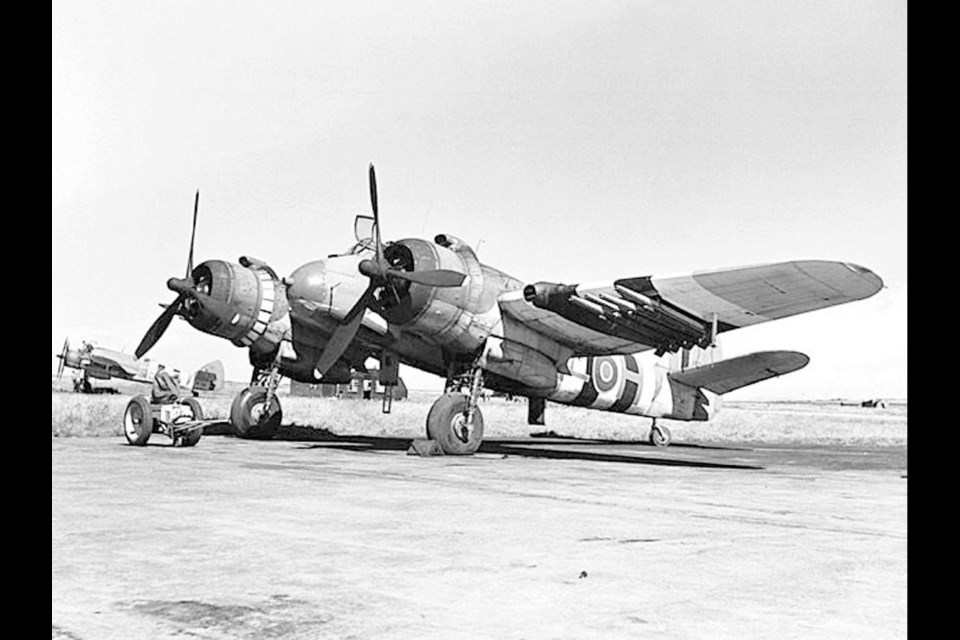For Royal Air Force veteran Tom Burdge, the true cost of the Second World War demonstrated itself years after fighting stopped.
Afterward, still serving in the reserves, Burdge agreed to organize an air cadet squadron in his hometown in England.
“I would think to myself: ‘Golly, these kids are only a bit younger than I was during the war,’ ” said the 91-year-old man, now living in Victoria.
“They were all good, healthy kids and I couldn’t help thinking it would be such a shame for them to be going off to a war of some kind,” Burdge said.
He and two friends, Fred Ashbaugh, 94, and Atholl Sutherland-Brown, 91, also air veterans, will be among about 200 people at Government House on Tuesday for a commemorative dinner, hosted by Lt.-Gov. Judith Guichon.
It’s an evening to honour the 90th anniversary of the Royal Canadian Air Force.
But there is a little irony in the evening for the three men.
Ashbaugh, of Esquimalt, and Sutherland-Brown, of Oak Bay, are both born Canadians and first enlisted with the RCAF. But all three of the veterans did their wartime flying with Britain’s Royal Air Force, deployed where they were needed.
During the war, they were united by common enemies, the Germans and Japanese. Now, they are united by memories of wartime flying, its excitement, pride and sadness.
And in conversation with all three, they are joined by a kind of mutual respect for each other’s experiences, almost diminishing their own.
Sutherland-Brown flew a Bristol Beaufighter fighter-bomber over Burma, attacking bridges and railways to disrupt the Japanese.
Unlike the other two, who operated from England and Europe, he contended with the heat, humidity, monsoon rains and gastro-intestinal conditions of the tropics.
“And no beer and no ladies,” he said, laughing.
But Sutherland-Brown expressed his biggest respect for navigators, like the ones who flew beside him. They could only watch as the whole mission was carried out. Sutherland-Brown’s own navigator refused to fly after the war, even commercially.
Burdge flew a de Havilland Mosquito, an aircraft famed for its plywood construction. He flew, armed with rockets, across the North Sea to attack German supply ships hiding out during the day in Norwegian fjords.
But the Germans had radar. So almost the entire flight was close to the waves, below the altitude of 50 feet, to avoid detection.
Once inside the fjords, the approach was below the levels of the mountains on either side. The target was often a ship, hiding close to a shielding mountain face to make it tougher for the RAF planes to get close.
The low altitude and close mountains created extreme flying hazards.
That was especially so when the mission included as many as 80 other planes and then encountered squadrons of defending German fighter planes. It all made for a congested, dangerous airspace.
Ashbaugh, the lone bomber pilot of the three, flew Stirling and Wellington aircraft, from England and Italy. Between his two tours, he amassed a considerable record of 62 missions, sometimes flying two, even three days in a row.
“Can you imagine, going out in the dark, night after night, getting shot at and you are out there for about eight hours,” Burdge said.
But Ashbaugh himself remembers some of his most frightening moments were at the start of a mission, taking off.
“You’re carrying over 1,000 gallons of high-octane gas, several thousand pounds of high explosives and four fans [propellors] pulling that off the ground,” he remembered.
The three pilots now share a common disgust at the notion of war. The word “waste” comes up, again and again, to describe their feelings. That’s waste of life, waste of money, waste of material, waste of everything.
“I remember after the war flying over the Ruhr Valley [Germany] and seeing just miles, literally miles, of buildings with no roofs on them,” Ashbaugh said. “They had all been blown off, destroyed.”
“It was such an awful waste,” he said.



